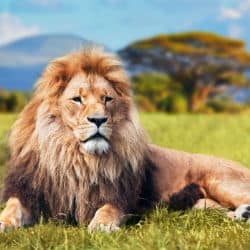Lion Populations Could Drop By Half Within 20 Years Researchers Warn

Lion populations could drop by as much as 50 per cent within two decades across much of the African continent according to the results of a new study. The study warns that lions living in West Africa are most at risk of being wiped out as a result of hunting and human encroachment. The study took twenty years and will be published by the US Proceedings of the National Academy of Sciences (PNAS).
Lions in Southern Africa doing well
The exceptions to the warning are in the countries of South Africa, Botswana, Zimbabwe and Namibia where lion populations are intensively managed and their numbers are rising. Researchers estimate that in the mid 20th century there were as many as 200,000 lions spread throughout the African continent which is ten times more than the 20,000 lions left today.
“Many lion populations are either now gone or expected to disappear within the next few decades, to the extent that the intensively managed populations in southern Africa may soon supersede the iconic savannah landscapes in East Africa as the most successful sites for lion conservation,” the study said.
West African lions are at most risk
Philipp Henschel a co-author of the study says that the lions that remain can be found in just a quarter of the territory which they used to roam. The study also found the West African situation was most critical. Based on the decline in numbers since 1990, the West African lion population which consists of two large groups are expected to see their numbers fall by 50 per cent within 20 per cent.
“Already recognized as critically endangered in West Africa, our analysis supports listing (lions) as regionally endangered in Central and East Africa,” where they are currently classified as “vulnerable”, the report’s authors said.
Humans are the main culprits
Falling lion numbers can be blamed squarely on humans who are either encroaching on their habitat through agriculture or hunting them, illustrated by the recent case of Cecil the lion. Some lions are hunted for their skins which are seen as valuable medicine in China, often used to replace tiger bone which is now very rare. The researchers say the efforts required to protect the lion will be massive and require lots of money.
“A recent study showed that it takes around $2,000 dollars per square kilometre per year to properly protect the lions,” said Henschel.



